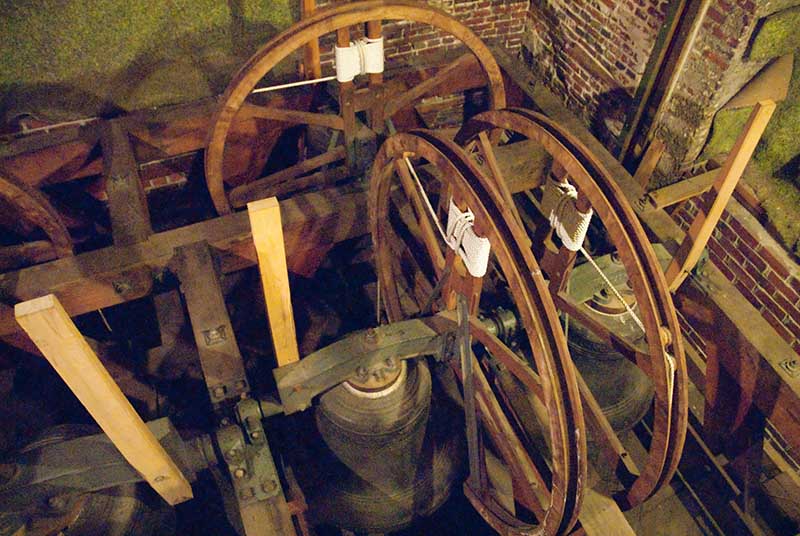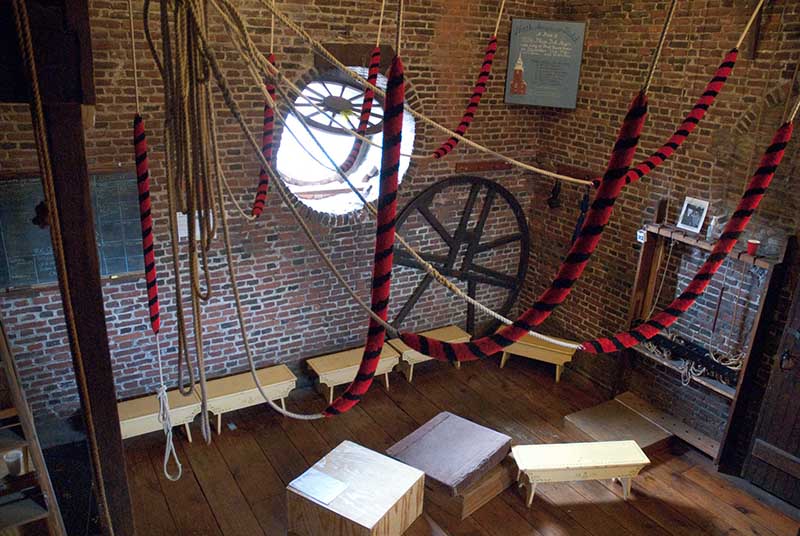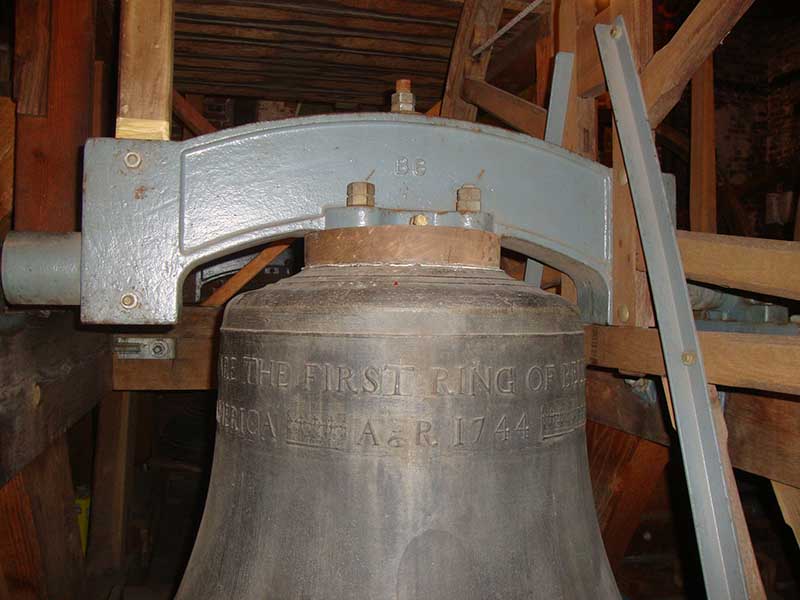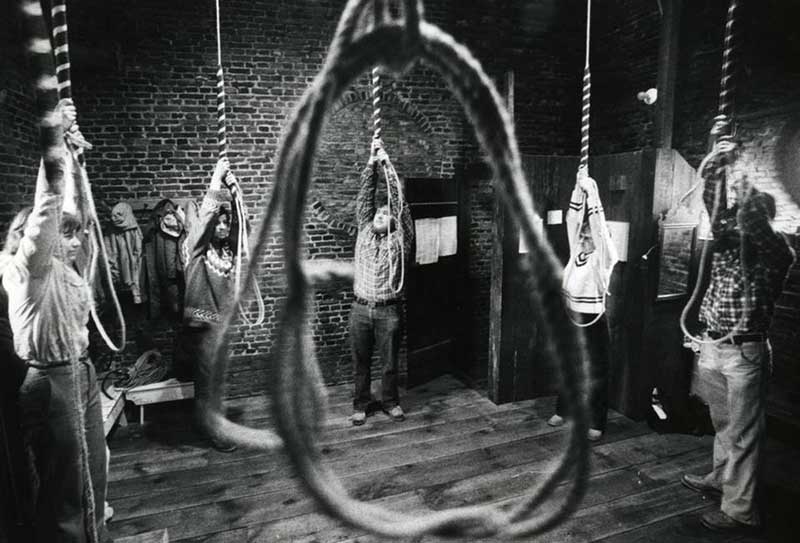The Bells at Old North
Any North End local has become familiar with the tolls of Old North Church’s bells, but few are aware of their history, or the skill and technique that comes with making them sound. The ringing of our bells maintains a legacy that began over 200 years ago, and remains one of the most treasured pieces of our story. Learn more below!
History of the Bells
The bells at Old North were installed back in 1745, but as their change-ringing bell style was the first of its kind in America, Reverend Timothy Cutler had a difficult time finding any experienced bellringers. They sat idle and unused for five years—that is, until 1750, when a group of teenage boys living in the North End was contracted to ring for two hours per week for one year. Each of them was paid 2 pennies a week for their work. One of these young men would go on to become a household name regularly associated with Old North—Paul Revere. At just15 years old, Revere was one of the first people to ring our bells. Perhaps it was his experience with Old North Church and its steeple that helped him form the plan for the now-legendary events of April 18th, 1775.

How Do They Work?
Old North has a total of 8 bells, each cast to ring at a different pitch. The treble bell, or #1, is the smallest bell and weighs in at about 620 lbs. The largest is the tenor, or #8, which weighs about 1,500 lbs. Each bell is hung inside a wooden wheel and frame, with ropes attached that extends to the bell-ringing chamber two floors down. A colored covering on the ropes called a “sally” indicates where the ringer must catch the rope, and also helps prevent rope burn.

One ringer is assigned to each bell, and begins by bringing the bell into an “up” or “live” position (meaning the mouth of the bell is facing upward, which makes it look upside-down to us). As the bell ringer pulls on the rope, the momentum carries the bell around to the other side in a pendulum motion. As the bell shifts to and fro, the clapper hits the soundbow (side of the bell) and the bell sounds in a “mouth up” position to maximize loudness. Rather than performing familiar carols, change-ringing is a mathematical performance type that creates a cascade of sounds determined by specific numeric patterns (hence the reason each bell is assigned a number between 1 and 8).

The Bellringers
Today, Old North’s ringing group is made up of Boston area residents and students in connections to the Massachusetts Institute of Technology called the MIT Guild of Bellringers. The same ringers are responsible for ringing at the Church of the Advent in Beacon Hill. The bells at Old North are rung every Sunday after the 11 am service, as well as after special occasions and holidays like the 4th of July.

Practice & Performances
On a typical weekend, multiple shorter pieces (~5-10 minutes) are played on Saturdays as part of the Guild’s two-hour practice time, as well as after Sunday services. Occasionally, the Guild will also attempt a quarter peal, which is a mid-length performance of about 45 minutes. These performances are conducted from memory and without any breaks or swapping out of ringers.
Twice a year, a full peal is attempted at Old North. Peals are long performances which take about two and a half to three hours on our bells. They are often rung to mark important events in the lives of the ringing group members or the wider community (i.e. births, weddings, deaths, and inaugurations).
Full peals are incredibly complex, with each bell ringing at least 5,000 times. As these attempts are also performed without any memory aids or breaks, they require a great deal of concentration and physical exertion. Ringers will often spend months studying for these performances, and successfully completing a peal is the gold standard way for a ringer to establish their mastery in the change-ringing method.
The Full Peal – November 24th
This past Sunday Old North observed the Feast of Christ the King Day, and the Guild successfully rang their second full peal of the year. Click here for the full report!
Special thanks to Dale Winter and the MIT Guild of Bellringers for helping us put together this post! If you are interested in learning more about the bellringers, visit their website. If you are interested in joining the Guild and learning the art of change-ringing at Old North, email bellringers@mit.edu.
